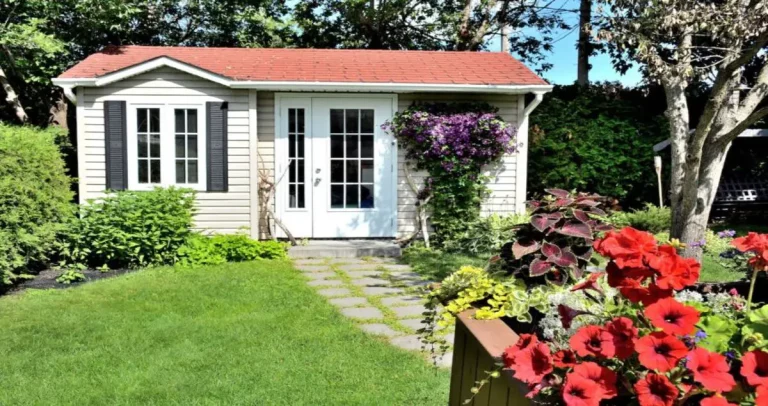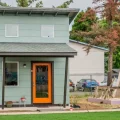Accessory Dwelling Units (ADUs) have gained increasing attention as a solution to address housing shortages and create additional income streams for homeowners. However, understanding and navigating ADU zoning regulations can be a complex and multifaceted process. In this comprehensive guide, we will delve into the world of ADU zoning regulations for single-family homes, shedding light on the key aspects that homeowners, architects, builders, and policymakers need to consider.
Understanding ADUs
What are ADUs?
ADUs, or Accessory Dwelling Units, are secondary residential units located on the same property as a primary single-family home. They come in various forms, including detached ADUs, attached ADUs, and converted spaces within the primary residence. ADUs serve a multitude of purposes, from providing housing for family members or renters to creating a home office or studio.
Historical Context
To appreciate the significance of ADU zoning regulations, it’s important to understand their historical context and how they have evolved over time. ADUs have been used for generations, often serving as in-law suites, rental units, or guest houses. The historical roots of ADUs offer valuable insights into their role in addressing housing needs.
Benefits of ADUs
ADUs offer a range of benefits, including increased housing options, potential rental income, and the ability to accommodate changing family needs. Additionally, they can contribute to more sustainable and efficient land use by making use of existing infrastructure and underutilized space.
The Need for Zoning Regulations
Why Zoning Regulations are Necessary
Zoning regulations play a critical role in ensuring that ADUs are developed and maintained in a manner that aligns with community interests. These regulations help strike a balance between housing needs and neighborhood character preservation. Without zoning regulations, ADUs could be built without consideration for the impact on surrounding properties and the overall community.
Impact on Neighborhood Character
One of the primary concerns addressed by zoning regulations is the potential impact of ADUs on the character of residential neighborhoods. Regulations aim to maintain the aesthetics and ambiance of single-family home areas while accommodating the changing housing landscape.
Key Components of ADU Zoning Regulations
Navigating ADU zoning regulations requires a deep understanding of various components, each of which can significantly affect ADU development:
Maximum Size and Height Restrictions
Zoning regulations often stipulate maximum allowable sizes and heights for ADUs. These restrictions ensure that ADUs do not overwhelm the primary residence or surrounding properties while maintaining a harmonious streetscape.
Setbacks and Lot Coverage Requirements
Setbacks dictate how far an ADU must be positioned from property lines and other structures, while lot coverage requirements control the amount of land the ADU can occupy on the lot. These requirements are essential for safety, privacy, and property aesthetics.
Parking Requirements
Parking regulations can significantly impact ADU development. Some areas require dedicated parking spaces for ADUs, while others may relax these requirements to encourage ADU construction. Parking provisions are closely tied to local transportation and mobility considerations.
Owner Occupancy Rules
Certain zoning regulations may require that either the primary residence or the ADU be owner-occupied. Understanding these rules is crucial for compliance and can have implications for the use of ADUs as rental units.
Design and Architectural Standards
Zoning regulations often include guidelines for the design and aesthetics of ADUs to ensure they blend harmoniously with the neighborhood. These standards can encompass architectural styles, materials, landscaping, and more.
Utility Connections and Infrastructure
Regulations may specify requirements for utility connections, water, sewage, and electrical systems for ADUs. Compliance with these standards is essential for safety, functionality, and environmental sustainability. Understanding the utility-related aspects is vital during the planning and construction phases.
Variability in Regulations by Location
ADU zoning regulations can vary significantly by location, making it crucial to research and understand the specific rules in your area:
State-level ADU Legislation
Some states have enacted legislation that governs ADU development statewide, providing a foundation for local regulations. Understanding state-level laws can offer insight into the general framework for ADUs.
City or Municipality Regulations
Cities and municipalities often have their own ADU zoning regulations, which can differ widely from one place to another. These local regulations take into account the unique characteristics and housing needs of each community.
Case Studies
Examining case studies from different regions can provide insights into how ADU regulations are applied in practice and the impact they have on communities. Learning from the experiences of other homeowners and builders can inform your own ADU project.
The Role of Community Engagement
Community engagement is a crucial aspect of ADU zoning regulations:
Public Input in the Zoning Process
Communities often have the opportunity to provide input on ADU zoning regulations during the policymaking process. Public feedback can shape these regulations, ensuring they align with the interests and values of the community.
Balancing Community Interests
Zoning regulations aim to balance the interests of homeowners, renters, and community stakeholders. This involves addressing concerns and finding compromises that benefit all parties. Effective community engagement can foster understanding and collaboration.
Challenges and Controversies
ADU zoning regulations can be contentious, leading to various challenges and controversies:
Opposition to ADUs and Zoning Changes
Not everyone supports ADUs or zoning changes, and opposition can arise from concerns about increased density, traffic, and potential impacts on property values. Addressing these concerns through thoughtful policy and communication is essential.
Political and Bureaucratic Challenges
Navigating the political and bureaucratic landscape can be challenging for homeowners seeking ADU approvals and permits. Understanding the processes involved and building relationships with local authorities and policymakers can streamline the journey.
Recent Changes and Trends
The landscape of ADU zoning regulations is continually evolving, with recent changes and emerging trends:
Recent Changes in ADU Regulations
Stay informed about recent changes in ADU regulations, as they may impact your plans. Many areas are becoming more lenient to encourage ADU development, recognizing their role in addressing housing shortages.
Trends in Relaxing Zoning Restrictions
An increasing number of regions are embracing ADUs by relaxing zoning restrictions. Explore how these trends are shaping the future of housing, and consider how they may impact your ADU project.
Success Stories
Learn from successful ADU implementation stories and discover how homeowners have benefited from complying with zoning regulations. These stories can provide inspiration and practical insights for your own project.
Steps to Comply with ADU Zoning Regulations
For homeowners, architects, and builders, navigating ADU zoning regulations involves several key steps:
How Homeowners Can Navigate Regulations
Understand the process of obtaining permits and approvals, and ensure that your ADU complies with all zoning regulations. Engaging with professionals who specialize in ADUs can be invaluable.
Seeking Permits and Approvals
Detailed information on how to seek permits and approvals, including the necessary documentation and application procedures. Navigating the permitting process can be complex, and compliance is crucial.
Working with Architects and Contractors
Collaborating with professionals who understand ADU zoning regulations can streamline the design and construction process. Architects and contractors experienced in ADUs can help bring your vision to life while adhering to regulatory requirements.
Conclusion
In conclusion, ADU zoning regulations for single-family homes are a complex but essential aspect of ADU development. By understanding these regulations and complying with them, homeowners can successfully create ADUs that contribute positively to housing solutions while preserving the character of their neighborhoods. Whether you’re a homeowner looking to expand your property’s utility or a policymaker shaping ADU regulations, this guide serves as a valuable resource to navigate the intricate world of ADU zoning regulations.
Ready to navigate ADU zoning regulations for single-family homes? Dive into our comprehensive guide to ensure a smooth journey in ADU development. Whether you’re a homeowner, architect, builder, or policymaker, discover the keys to success. Read the full article now!







